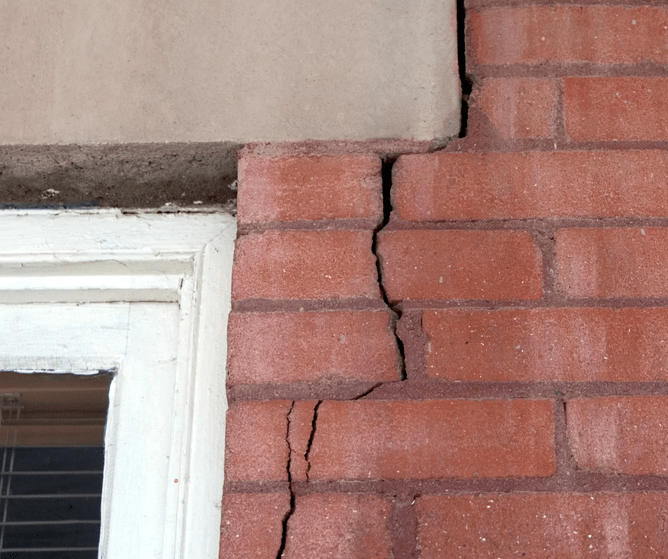Most homeowners will spot a crack or two (or more) in their house at some time, even those who don't live in an earthquake zone. But when is a crack something minor or a problem that needs to be tackled on a bigger scale? We've come across this article from www.stuff.co.nz
Earthquakes are not the only cause of cracks in the walls of a house - shifting foundations can be caused by soil type and soil displacement following weather-related events.
James O'Grady from ground engineering firm, Mainmark says although some cracks are nothing to worry about, others can indicate sinking or damaged foundations. "Turning a blind eye to wall cracks can result in the homeowner missing the warning signs for serious and ongoing structural damage," he says.
"Generally, smaller hairline cracks are not cause for concern. These are usually the result of seasonal expansion and contraction of clay soils beneath the house resulting in minor foundation movement. These types of cracks can be easily patched and re-painted."
Jeremy Wyn-Harris of Builderscrack.co.nz says every new house will settle on its foundations over the first few years, and most minor cracks will run vertically down the walls."A vertical crack usually means the Gib or drywall has moved a bit, and it's usually OK. But if the cracks get bigger or are gaping then it pays to call in a professional. A horizontal or jagged crack at a 45-degree angle can indicate a more serious problem, such as shifting foundations or water damage. Stair-step cracks in a brick house are also a concern, as they can indicate changes in the foundations."
O'Grady points to three indicators that a crack may be more serious – if one side of the wall is higher than the other, if doors and windows no longer close in their frame, or if cracks are wider than 5mm."Problematic wall cracks will typically start at windows, doorways or house corners," he says.Other signs that action may be required may be nail pops, says Wyn-Harris. "These may indicated a drywall has pulled away from the studs or moved."
CEILING CRACKS
Ceiling cracks are another concern. "Spider web cracks are often seen in older homes that may have shifted over time," says Wyn-Harris.
"These start at a point and are usually nothing to worry about. But a crack that starts in the ceiling and continues down the wall is a sign that it could be something more structural, such as a weak wall stud or earthquake damage.
"A bowed ceiling is a serious concern as it indicates a problem with the joists, and we would advise calling in an expert, such as a licensed building practitioner, straight away. They may then refer you to a structural engineer."
O'Grady says it's essential for homeowners to take necessary precautions following any seismic activity.
O'Grady says it's essential for homeowners to take necessary precautions following any seismic activity.
"The Ministry of Business, Innovation & Employment (MBIE) has a range of resources describing the process of post-emergency building assessment."
However, it is important to be aware that location-specific factors such as soil type, soil displacement, rainfall events and individual building design can also affect a building's structural strength and lead to cracks."
UNDERPINNING
O'Grady says the best long-term solution for fixing large cracks is to lift, re-level and re-support the home. "This process is called 'underpinning'.
As the house is elevated to a level position, the cracks may close or become smaller (plaster or render walls can then be patched and repainted). Windows and doors will also usually begin to work properly again.""One method, which has been likened to keyhole surgery, is injecting Teretek resin into the home's foundations through tiny holes.
The resin expands to fill in voids and to compact soft ground, exerting controlled pressure to raise the home back towards a consistent level. The process is very specific and carefully controlled using laser technology."
The Teretek resin option, which is BRANZ accredited, can be completed within a day and doesn't mean you need to move out of the house.
Both experts say when underpinning is required, the first step is to talk to a structural engineer to discuss the best solution for your specific problem.
Article sourced from https://www.stuff.co.nz/life-style/homed/latest/98246525/when-is-a-crack-in-the-house-a-problem
Written by Colleen Hawkes




